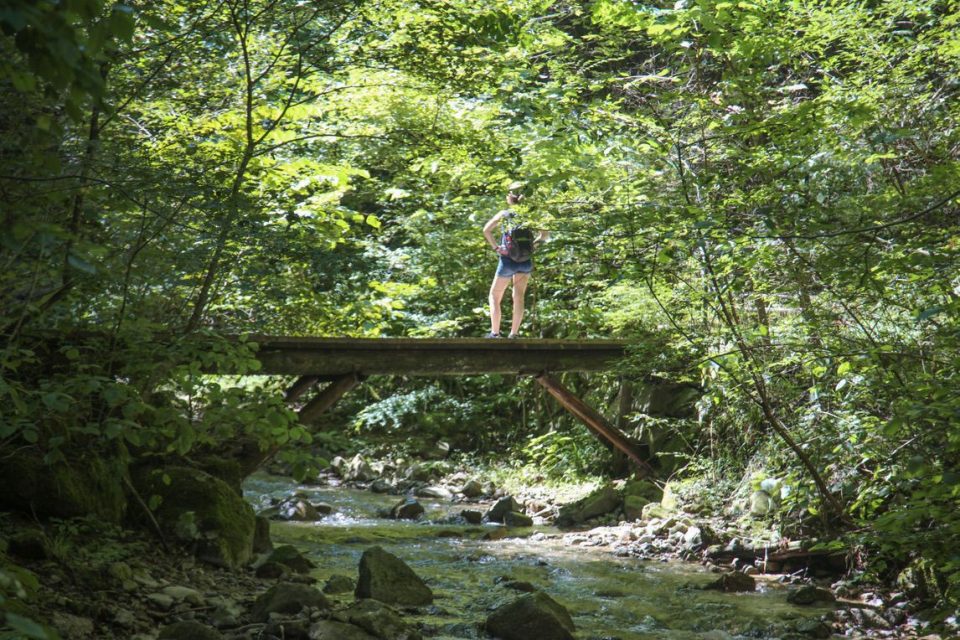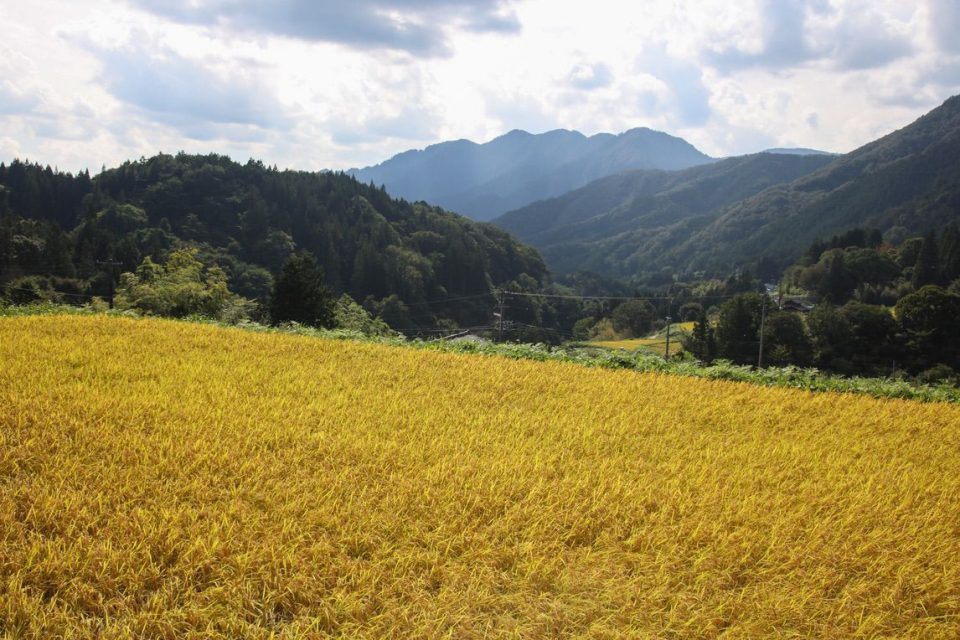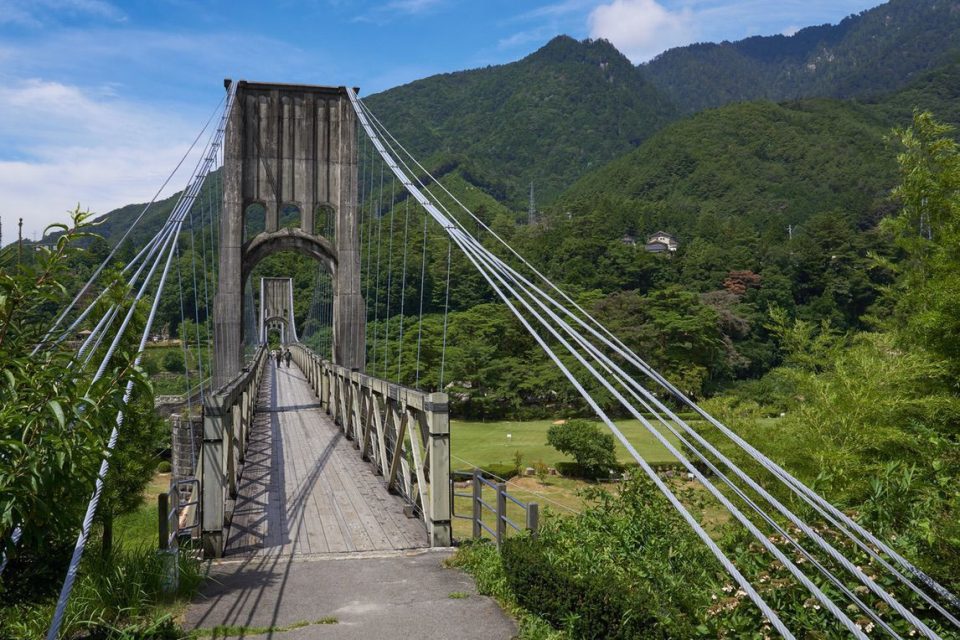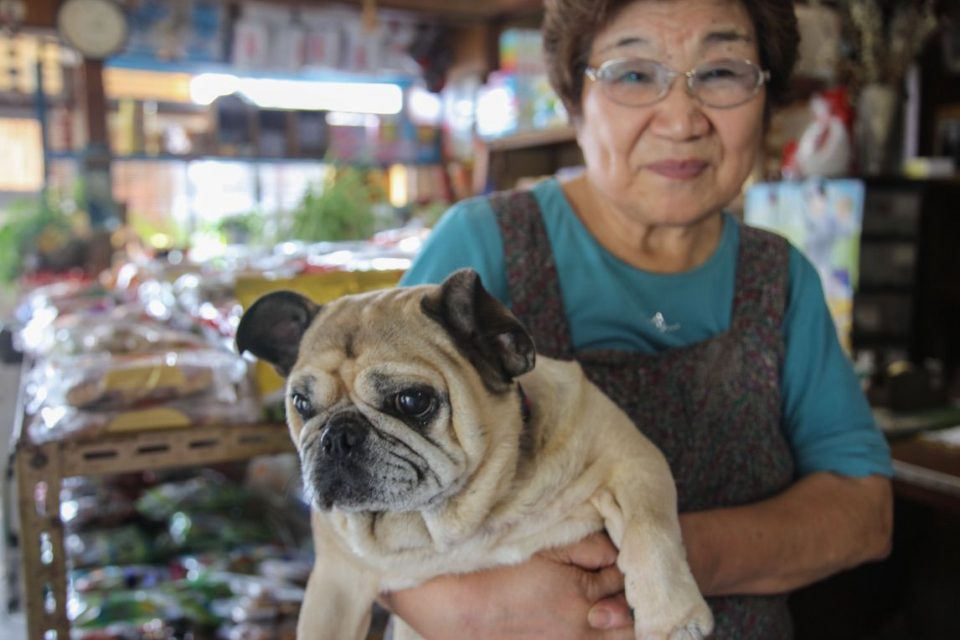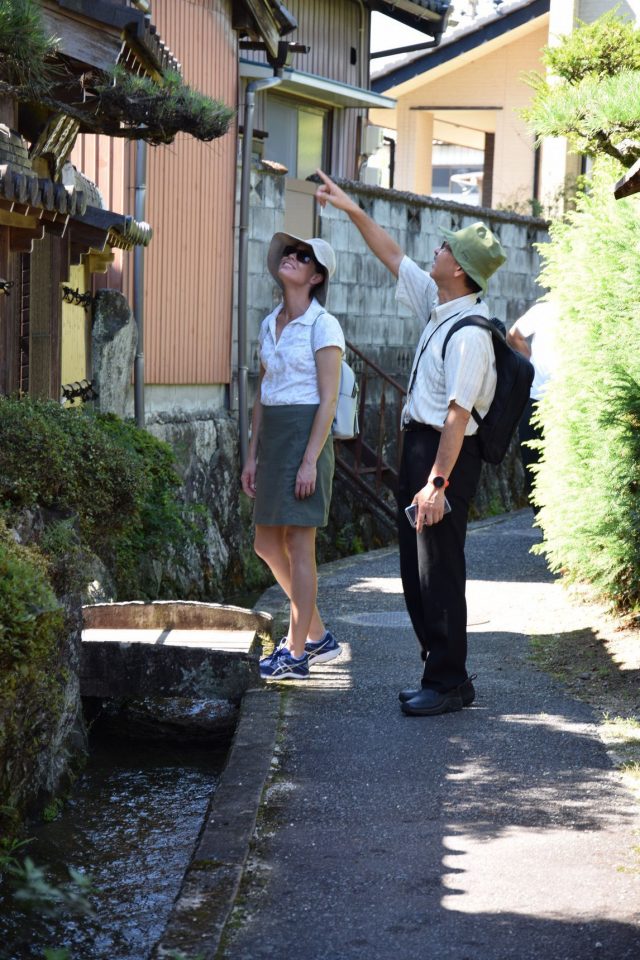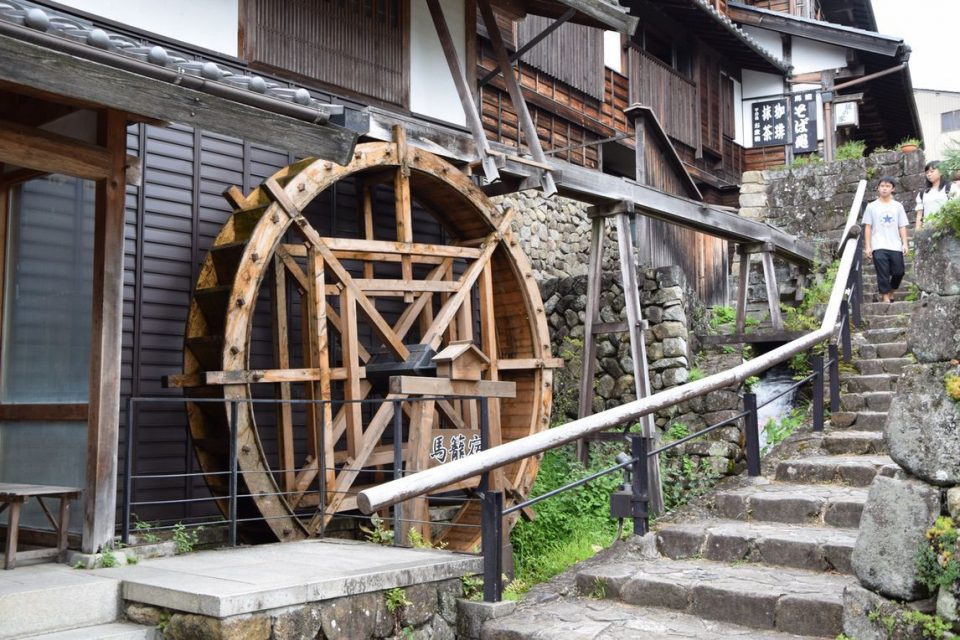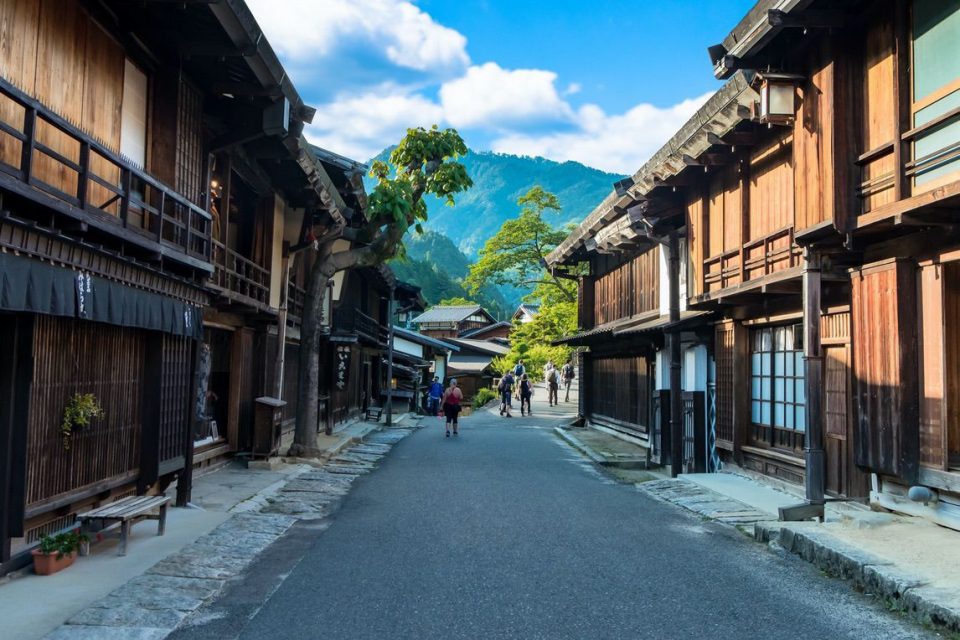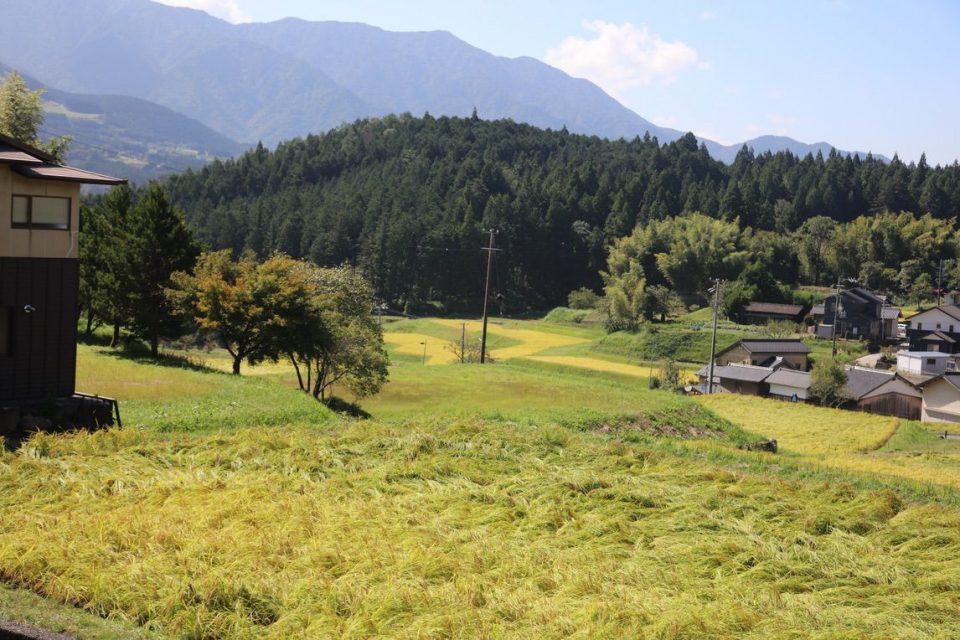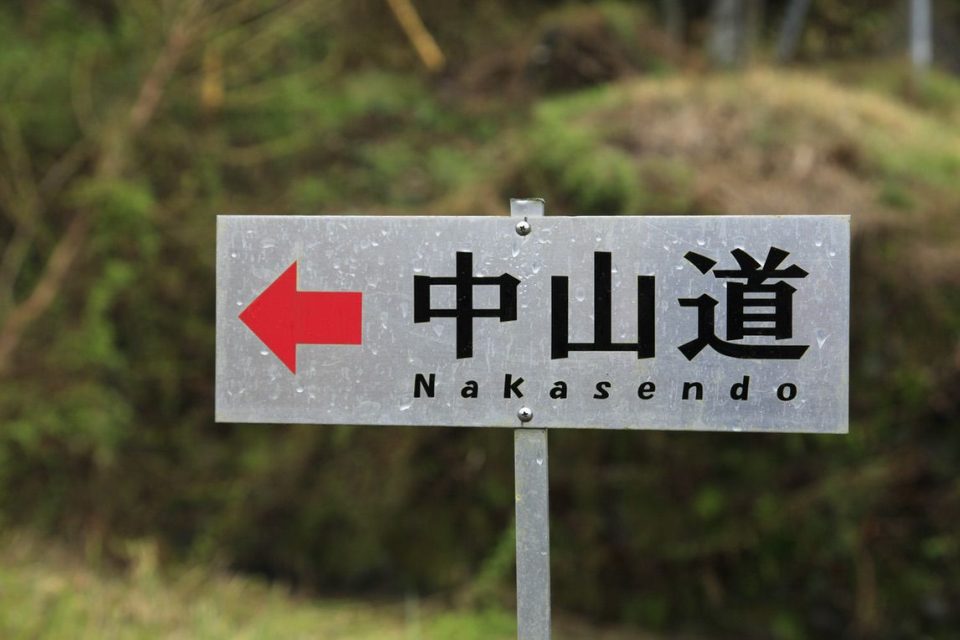length
8 Days
difficulty
Moderate - Challenging
trip cost
From $3695 pp
Nature Immersion
Cultural Interest
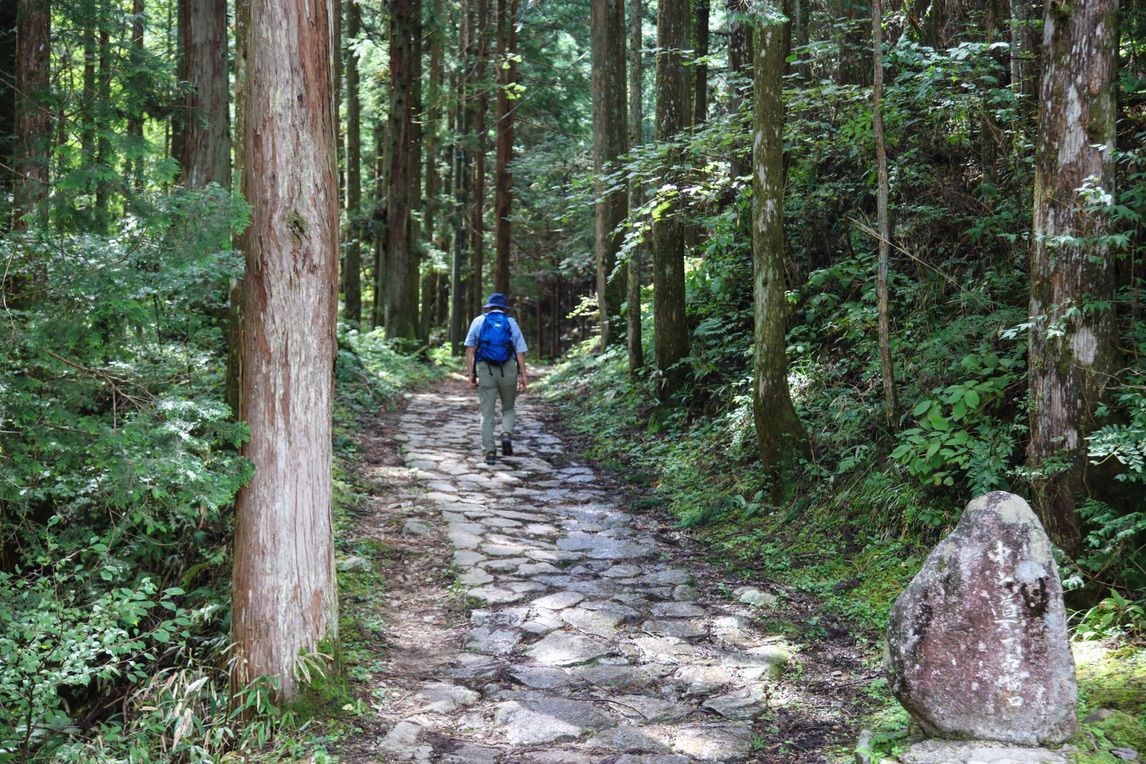
Highlights
Get Ready For
- Journey through the heart of Japan
- Visit the hot springs district of Shimosuwa
- Walk the historical Nakasendo Way through the Kiso Valley
- Walk original ishidatami (stone paving) dating back over 400 years
- Visit Nakatsugawa, Magome, Tsumago, Kiso Fukushima and Narai
- Following in the footsteps of the Tokugawa Shogun and the Samurai during the Edo period (1603–1868)
Itinerary
Daily Details
Make your way from the Nagoya train station on the Meitetsu Line to Mitake Station (80 mins travel time). Mitake is where you will have a short briefing before you depart on your walk (meeting times will be in your travel documents). Our local RAW Travel representative will be able to recommend a local lunch spot (own expense) prior to your walk. You will begin your walk through the town and then make your way into the forest up a short hill known as the Cows Nose is Missing. This is the true beginning of your Nakasendo Way walk. Stay in the forest on this very scenic section through woodland and lush green countryside, walking on some of the original stoned paving known as ishidatami. There will be a chance to stop at La Province Café as you head towards Hosokute and your accommodation for the evening.
Meals: D
Enjoy your first traditional Japanese breakfast and prepare for an exciting day following in the footsteps of the Samurai. Today you will walk over a very old section known as the 13 passes and 13 peaks. There has been no public access through here, which keeps the area completely undeveloped, save for a golf course. The original way used to go through the golf course; nowadays you will follow the boundary of the course and again you will be walking on traditional stone paths. There is even a section that has only been rediscovered in the last few years. Continuing on your way through the mountains you will come across the well-preserved post town called Okute before then travelling along the ridge tops and descending into Ena. In Ena you can visit the museum known as the Hiroshiga, which features some wonderful prints of the Nakasendo Way.
Meals: B, D
Today is a much shorter day, with gentle and undulating walking. You will pass through towns and villages and parts of the city, across rice paddies and fields and even through home gardens, talking to the locals along the way and taking in the Japanese culture. Nakatsugawa was number 45 of the 69 traditional post towns of the Nakasendo Way, and you can spend the rest of the day exploring. Many of the old buildings and shops still work today. Also worth a visit is the Naegi Castle ruins, located just north of the town.
Meals: B,
After leaving Nakatsugawa at the ancient Kosatsuba (official proclamation board) you will come across red torii gates just after Nakatsugawa Juku. There will be some steep slopes today before Ochiai and then you will be walking on an old cobblestoned way. It’s on this route that you will be walking up to the entrance of Magome, one of the highlights of the Nakasendo Way. Magome (Horse & Basket) is number 43 of the 69 post towns along the way to Edo (Tokyo). It truly is a reminder of how the post towns were in the Edo period (1603–1868).
The Nakasendo Way continues through the centre of Magome past the old shops and inns. The trail begins to climb up to the small settlement of Touge, and this is a good spot to take a rest break. You will then walk over the Magome Pass (800m) and slowly descend through peaceful woodland. You’ll hear the roar of the Odaki-Medaki waterfalls, which slowly fade as you pass streams and rice paddies coming into the old (smaller) village of O-Tsumago.
Leaving O-Tsumago, the trail climbs briefly before descending into the enchanting main village of Tsumago, (number 42 of the 69 post towns). The street is lined with traditional Japanese wooden houses, shops and ryokan (inns). You might want to stroll through the streets after dinner wearing a traditional yukata gown provided by your accommodation.
Meals: B, D
Leaving the old town of Tsumago at the ancient Kosatsuba (official proclamation board) you will see on the board the old wooden tablets which state that no Christianity can be practised. The trail ascends steeply up the valley then continues through the forest on what is known as the Yogawa Forest Route to Nojiri, passing through cedar forests and farmland. It is one of the most scenic sections of the walk. The forest walk joins the Kiso River as you descend into Nojiri. After a late lunch in Nojiri, make your way to the train station for a 40-minute ride to Kiso-Fukushima. Located halfway on the Nakasendo Way between Kyoto and Tokyo, Kiso-Fukushima was an important checkpoint during the Edo period.
Meals: B, D
Today you will catch the train from Kiso-Fukushima to Yabuhara and start your final day’s walk of the Nakasendo Way, hiking up to the Torii Pass, named after the Shinto Torii Gate, which marks one of four protective sites surrounding Mount Ontake. At 1197m, the Torii Pass is a great vantage point for views of Mount Ontake on a clear day. The descent takes you along narrow mountain paths until you emerge at the outskirts of Narai, a lovely post town and the wealthiest of the post towns along the trail. Explore and relax in the cafes and shops of this well-preserved and atmospheric town.
Please note that depending on availability, your accommodation for tonight may be in Narai, Kiso Fukushima or Shimosuwa.
Meals: B, D
Today you will journey by train further along the Nakasendo Way to the town of Shimosuwa. Historically, this was a resting station for travellers during the Edo period and is a fitting spot to finish your journey as it is the only hot springs district on the Nakasendo Way. As you walk through the town you can experience a number of foot baths, which is a great remedy for weary feet that have just hiked for six days along the Nakasendo Way! Continuing through Shimosuwa you will have the opportunity to visit a number of temples and shrines, with the Suwa Taisha Shrine considered to be one of the oldest shrines in Japan. It was first mentioned in Japanese literature in the 7th century. The Shinto Shrine has over 10,000 branches throughout Japan. Shimosuwa is also home to a 400-year-old castle as well as a number of hot springs (onsens), sake breweries and festivals. In summer they have a fireworks festival, while every 7 years the ancient pillar riding festival of Onbashira takes place, where locals ride a giant log down the hill.
Meals: B, D
Today is departure day. After your traditional Japanese breakfast, you can take the train to your next destination.
Meals: B
Map
Explore
Mitake
Mitake was number 49 of the 69 post towns of the Nakasendo Way connecting Edo with Kyoto. It flourished with the passage of people, materials, information and culture, and was said to be one of the liveliest post towns in southeastern Gifu.
CLICK ON A PIN TO REVEAL INFORMATION ABOUT THAT LOCATION
Hosokute
Hosokute was first established in 1610 as a temporary post town between Okute-juku to the east and Mitake-juku to the west. It was originally built to alleviate the major congestion of travellers along this section of Nakasendo.
Ena
Ena was an important post town and the Edo heritage can still be seen today. The Hiroshige Museum of Art features some wonderful woodblock prints of the Nakasendo Way and is well worth a visit.
Nakatsugawa
Nakatsugawa was number 45 of the 69 traditional post towns of the Nakasendo Way. In the town’s narrow winding streets there are myriad well-preserved wooden buildings, residences and warehouses (kura). Worth a visit is the Naegi Castle ruins, located just north of the town.
Magome
Magome (Horse & Basket) was number 43 of the 69 post towns along the way to Edo (Tokyo). It truly is a reminder of how the post towns were in the Edo period.
Tsumago
The enchanting main village of Tsumago (number 42 of the 69 post towns) is lined with traditional Japanese wooden houses, shops and ryokan (inns). You might want to stroll through the streets after dinner wearing a traditional yukata gown provided by your accommodation.
Kiso-Fukushima
Kiso-Fukushima was one of the four security checkpoints during the Edo period and thus flourished as a political and economic centre in the Kiso Valley. The Kozenji-Temple houses the valley’s most famous temple and the largest stone garden in Japan.
Yabuhara
Yabuhara was number 35 of the 69 post towns and is located shortly before the Torii Pass (1197m), which offers great views of Mount Ontake on a clear day.
Narai
Lovely Narai was the wealthiest of the post towns along the trail. Explore and relax in the cafes and shops of this well-preserved and atmospheric town.
Shimosuwa
Historically, Shimosuwa was an important resting and healing spot for wounded samurai during the Edo period. Much of the traditional architecture remains. There are a number of temples and shrines, including the Suwa Taisha Shrine, considered to be one of the oldest shrines in Japan, the mossy Jiunji Temple with its zen stone garden and the impressive Manji Stone Buddha.
Inclusions
What's included?
- 7 nights accommodation along the trek (traditional Japanese guest houses – shared bathroom facilities)
- Daily meals as listed in the itinerary
- Luggage transfers on all trekking days
- Briefing in Mitake at the start of your trek
- Local and Australian emergency contact
- RAW Travel’s exclusive interactive navigation app
- Carbon offset for your trip and a native tree planted for every walker
- Bus and train tickets
- Flights
- Travel insurance
- Drinks other than water at meals
- Expenses of personal nature
- Lunches

On the Trail
The Experience
The Nakasendo Way offers picturesque, tranquil walking and a variety of trail conditions as you progress along the Kiso Valley. Much of the time you will be walking through fields and rural villages and enjoying gentle inclines that can be taken at a comfortable pace. In the forest you will be walking on a track that can be wet or uneven underfoot. In the more built-up areas the path itself is asphalt, while at its wildest it becomes unformed grit winding between alpine conifers. For sections in between these two extremes, the path is clad in what’s known as ishidatami – a traditional style of stone paving.
Reviews
What our clients say

Accommodation
Where you stay
On the Nakasendo Way, you’ll stay in a mix of family-run guesthouses, ryokans (traditional Japanese inns), and small hotels, each offering a unique slice of Japanese culture. Most accommodations feature authentic Japanese-style rooms, with tatami straw mats and futon bedding, though some small hotels may offer Western-style rooms. While ryokans tend to be simple, with shared toilets and bathrooms, they provide a rare opportunity to connect with locals and fully immerse yourself in their way of life. These traditional accommodations offer warm hospitality and home-cooked meals, creating memorable highlights that offer a true taste of local culture. Read more about What to expect in a traditional ryokan.
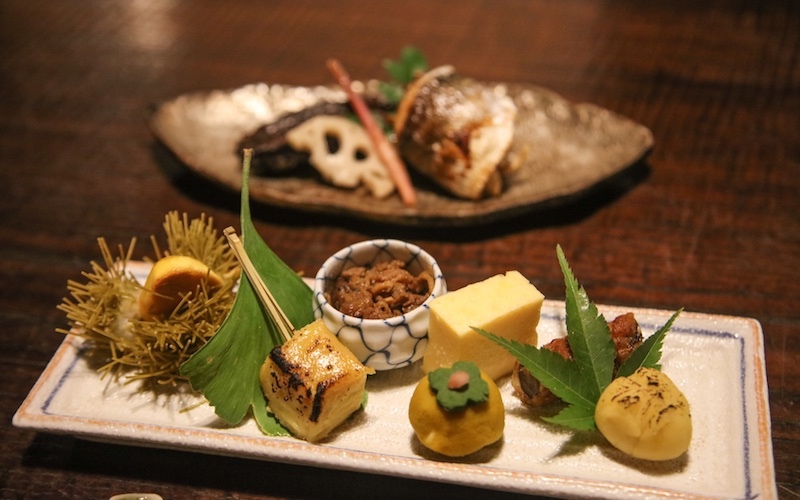
Food
Japanese cuisine
You’ll savour exquisite, fresh, locally sourced meals that are crafted with exceptional attention to detail. Food here is elevated to an art form, with a perfect harmony of flavours, appearance and a focus on seasonal ingredients. While Japan is known for its modernity, its traditions run deep, especially when it comes to food and dining etiquette. Every meal is a carefully considered experience. Accommodation owners and chefs take immense pride in preparing thoughtfully curated breakfasts and multi-course kaiseki dinners, showcasing the finest local ingredients, and offering you an unforgettable culinary journey that immerses you in authentic Japanese culture. Read more about the Japanese Food experience.

Navigation
Finding your way
Finding your way along the Nakasendo Way (a route with not much English signage) has become a lot easier with our exclusive APP, which has all your trip information and route guidance in one handy place. You still need to be self-reliant with wayfinding. Knowing the daily distances, elevation changes and notable landmarks will enhance your navigation. Our app can pinpoint and confirm whether you’re still on the correct trail. Like with any phone app, it’s not intended to be used constantly as you walk. Read more about all the great features of the app and how to use it for navigation.
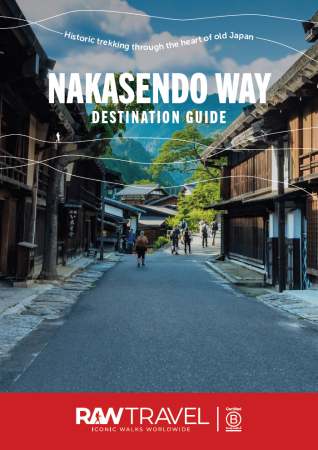
Exclusive Guide
get inspired
Ready to step back in time and discover a centuries-old road through the mountains of central Japan? The Nakasendo Way is a stunning 94km journey from Mitake to Narai. Steeped in history, much of this walk weaves through the picturesque Kiso Valley. The ‘post towns’ strung out along the route give an enticing and authentic glimpse into Japan’s past.
There is so much to discover on this route! Find out more in our comprehensive destination guide – it’s bursting with inspiration, travel essentials, practical information and more!
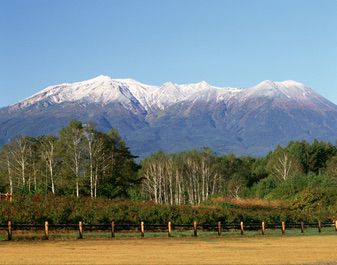
Japan
The Spring Group Guided Trip – Nakasendo Way
- Fully guided walk with our qualified Japanese guide
- View spectacular scenery in Japan’s central mountains
- Dive into the colourful history of the Shogun/Samurai
- Visit 16 of the original post towns from the Nobi plain land to deep in the Kisoji valley
$4,395.00
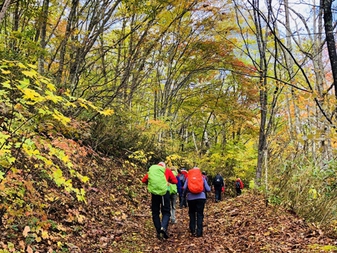
Japan
The Spring Group, Self-Guided Trip – Nakasendo Way
- Trek in a group of like-minded travellers
- Take a journey through the heart of Japan
- Follow in the footsteps of the Tokugawa Shogun and the Samurai
- Visit Nakatsugawa, Magome, Tsumago, Kiso Fukushima and Narai
$3,450.00
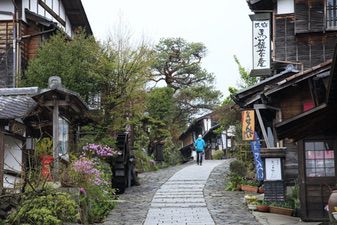
Japan
The Kiso Valley Highlights Trip – Nakasendo Way
- A great introduction to walking in Japan
- Taste the specialities of the Kiso Valley
- Enjoy wonderfully preserved ancient villages
- Stay overnight in family-run ryokans
$2,350.00
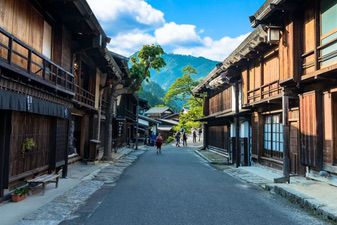
Japan
The Highlights Trip with Shimosuwa Onsen – Nakasendo Way
- Visit Shimosuwa, the only hot springs district
- Understand the feudal history with our local guide
- Walk the historical Nakasendo Way through the Kiso Valley
- Visit Nakatsugawa, Magome, Tsumago, Kiso-Fukushima and Narai
$3,350.00
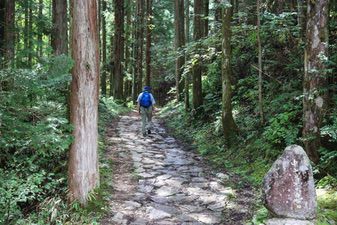
Japan
The Self-Guided Trip – Nakasendo Way
- A journey through the heart of Japan
- Walk the historical Nakasendo Way through the Kiso Valley
- Walk on ishidatami (stone paving) dating back over 400 years
- Visit Nakatsugawa, Magome, Tsumago, Kiso Fukushima and Narai
$3,250.00
TRIP date selection
when would you like to travel?
Please select your preferred dates for on-demand trips or select a scheduled date for group departures. If you have booked a self-guided trip please understand that because your trip date is on demand and we must check availability of all properties on your chosen dates before it can be fully confirmed

